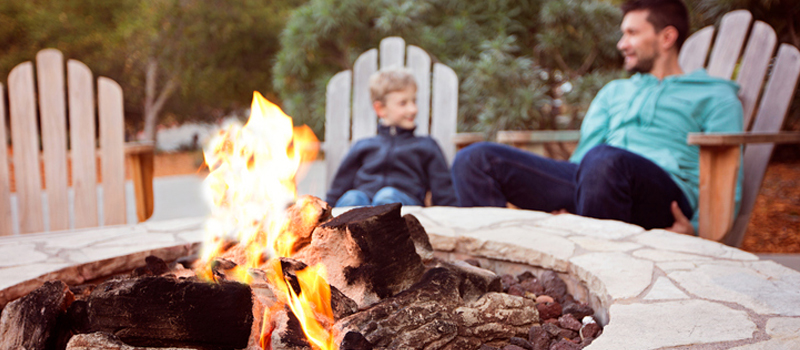Fire Pit Safety Tips
Fire Pit Safety Tips

Fire Pit Safety Tips
Before You Light The Fire:
- Be sure to select a spot that is an appropriate distance from anything flammable. Ideally, you should build your fire pit at least 10 feet from your home, trees, fences or outbuildings. Most safety experts recommend that you place your fire pit 25 feet from any structure.
- Check your fire pit surface to make sure it is flat and level. Starting a fire on an uneven surface increases the risk of the fire spreading beyond your fire pit.
- Select non-flammable, dry materials to construct your fire pit. Many experts suggest that dry, rough stones, concrete blocks or bricks are most effective. Keep in mind that river rocks are not recommended construction materials, as they absorb moisture over time and can explode when heated rapidly.
When Starting Your Fire:
- Keep your fire small and controlled, and avoid starting a fire on a windy day. Embers can spread to nearby trees, grass or other flammable materials.
- Never light a fire using gasoline, kerosene or lighter fluid, as these fuels can cause a fire to get out of control quickly. Instead, use small sticks, dry wood or paper, and keep these items inside the edges of the pit.
- Monitor your fire at all times, and never leave it burning unattended. If you’re entertaining guests, be sure that they maintain a safe distance from the fire and do not engage in dangerous behaviors.
- Be sure you know what kind of wood you’re burning to prevent accidents. It might sound obvious, but certain kinds of soft wood (like pine and cedar) tend to shoot sparks, which can cause injury. Make sure not to burn plywood or composite wood, as these can release toxic fumes.
- Keep the area around the fire pit clear of debris, including leaves and sticks. Be prepared for unexpected fire spread by keeping water, a garden hose or bucket of sand nearby to extinguish the flames if needed.
After Your Fire:
- At the end of the night, be sure to extinguish your fire using plenty of water. Stir and spread the ashes to be sure they cool.
- Watch the extinguished fire closely, and never leave it unattended until the embers stop smoking or steaming completely.
Even the most cautious homeowner can experience an unexpected fire damage, so make sure you have the homeowners insurance coverage you need to stay safe. If you’re unsure whether you have enough coverage or are uncertain about what is covered under your current policy, reach out to your local agent. They’re happy to answer any questions you have, and will help you get the coverage you need to protect what matters most.
